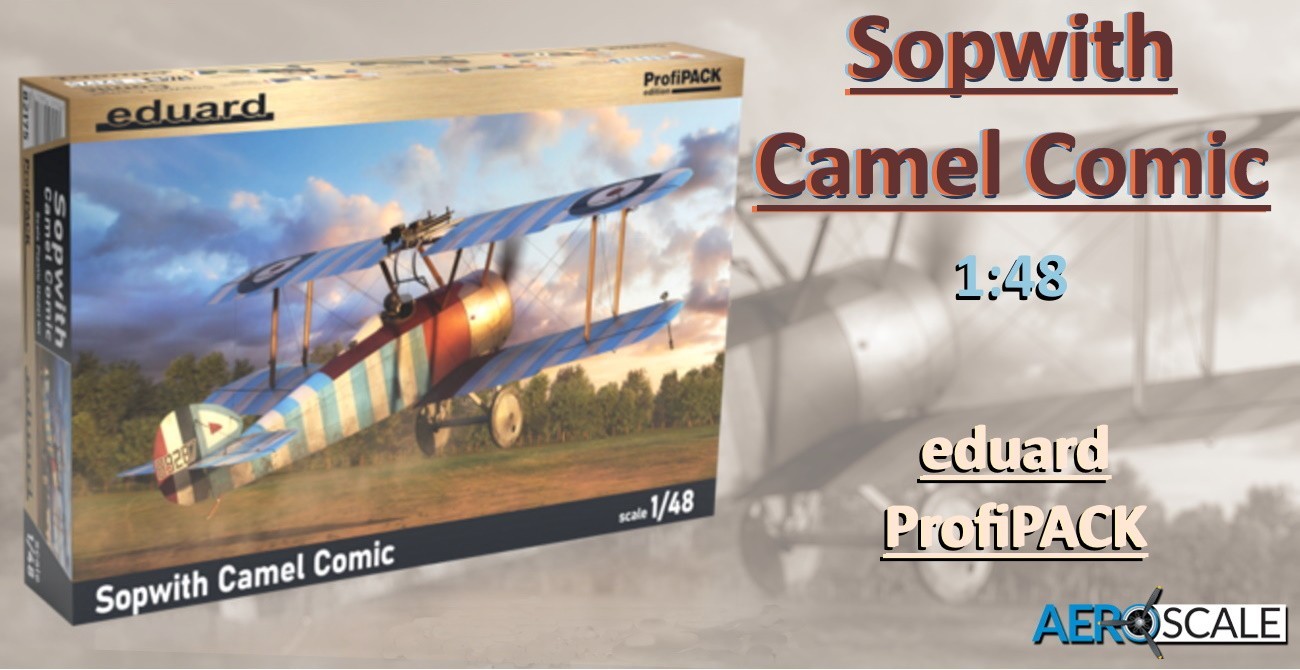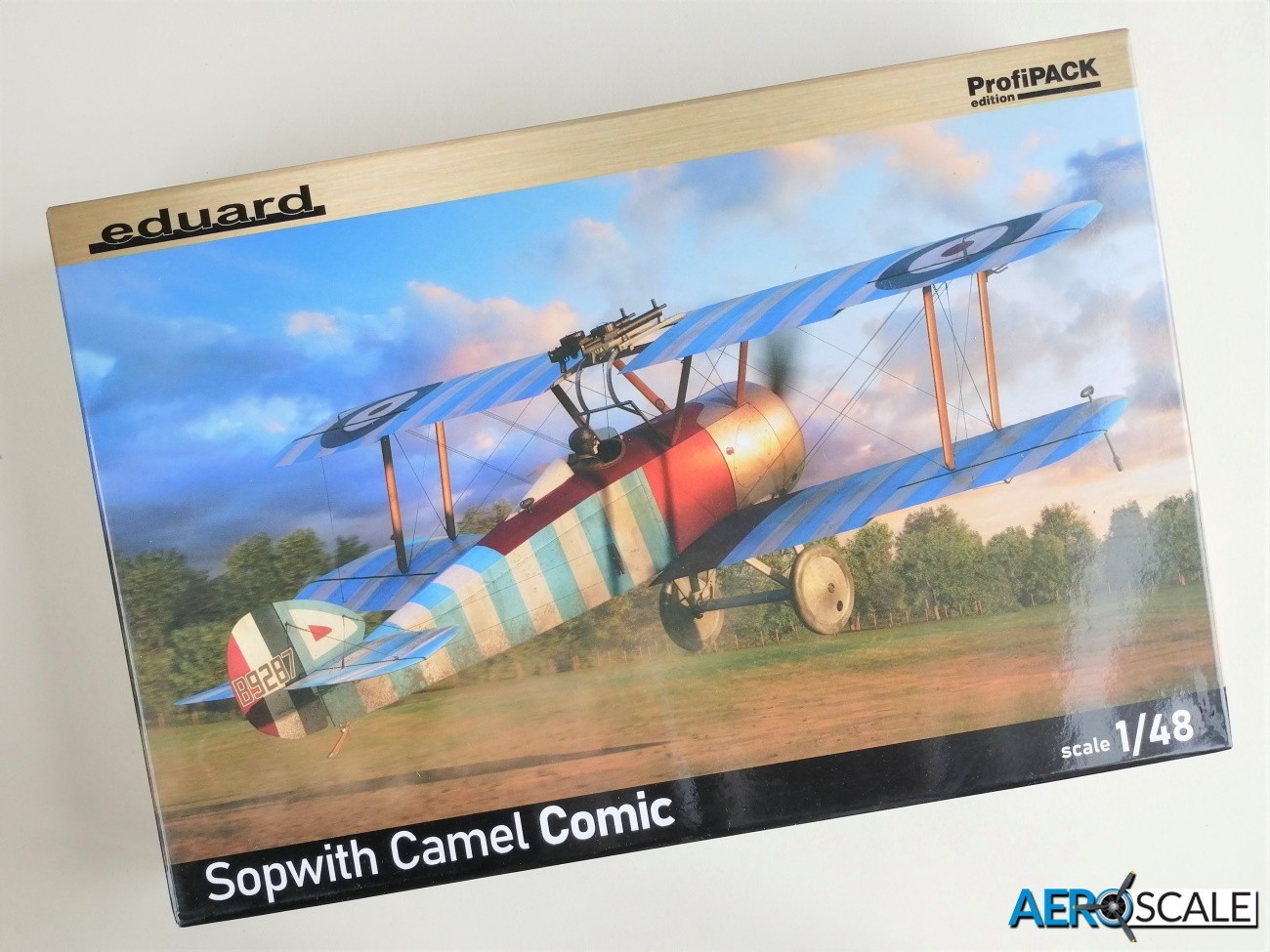
BACKGROUND
The Sopwith Camel replaced the Sopwith Puppy which was showing signs of being outclassed by German fighters. The Camel was powered by various single rotary engines including the Clerget 9B or the Bentley BR1. It was highly manoeuvrable dogfighter in the hands of an experienced pilot particularly at low speeds and altitude. Unfortunately, it was a handful for less experienced aviators. RFC pilots used to joke that it offered the choice between "a wooden cross, the Red Cross, or a Victoria Cross"


The Camel F.1 was the main variant and it was armed with twin synchronised 0.303 in Vickers machine guns. Other variants included the 2F.1 Ship's Camel, which operated from gun turrets, flat top ships and aircraft lighters [modified barges]. The Comic F.1/3 night fighter variant was introduced to combat the increasing nocturnal raids by the Germans. Towards the end of WWI, the armoured T.F.1, a ‘trench fighter’ was introduced, designed for attacks on heavily defended ground targets. The T.F.1 could carry a total of four Cooper bombs. A two-seat variant served as a trainer. The last Camels were withdrawn from RAF service in January 1920.
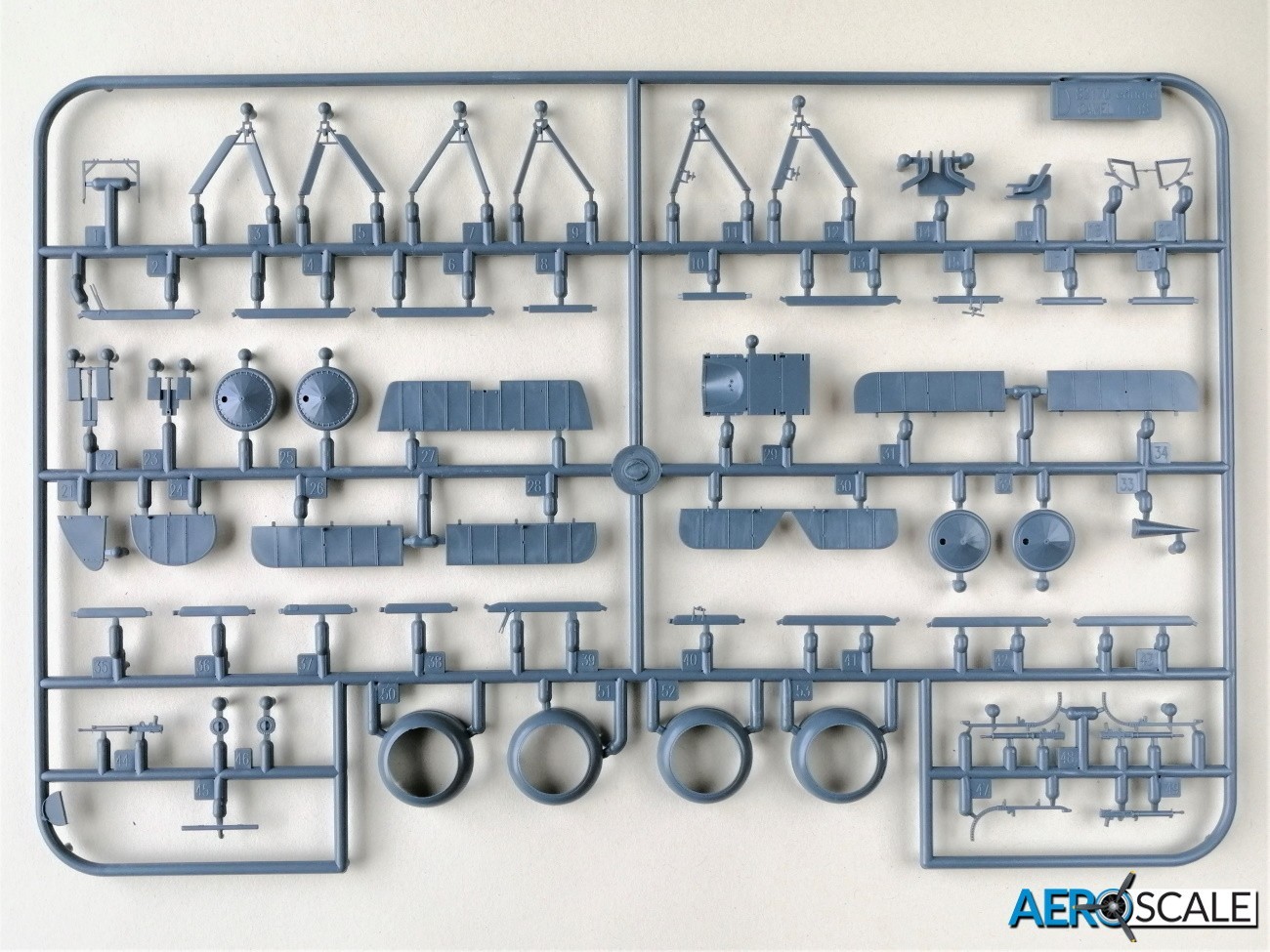
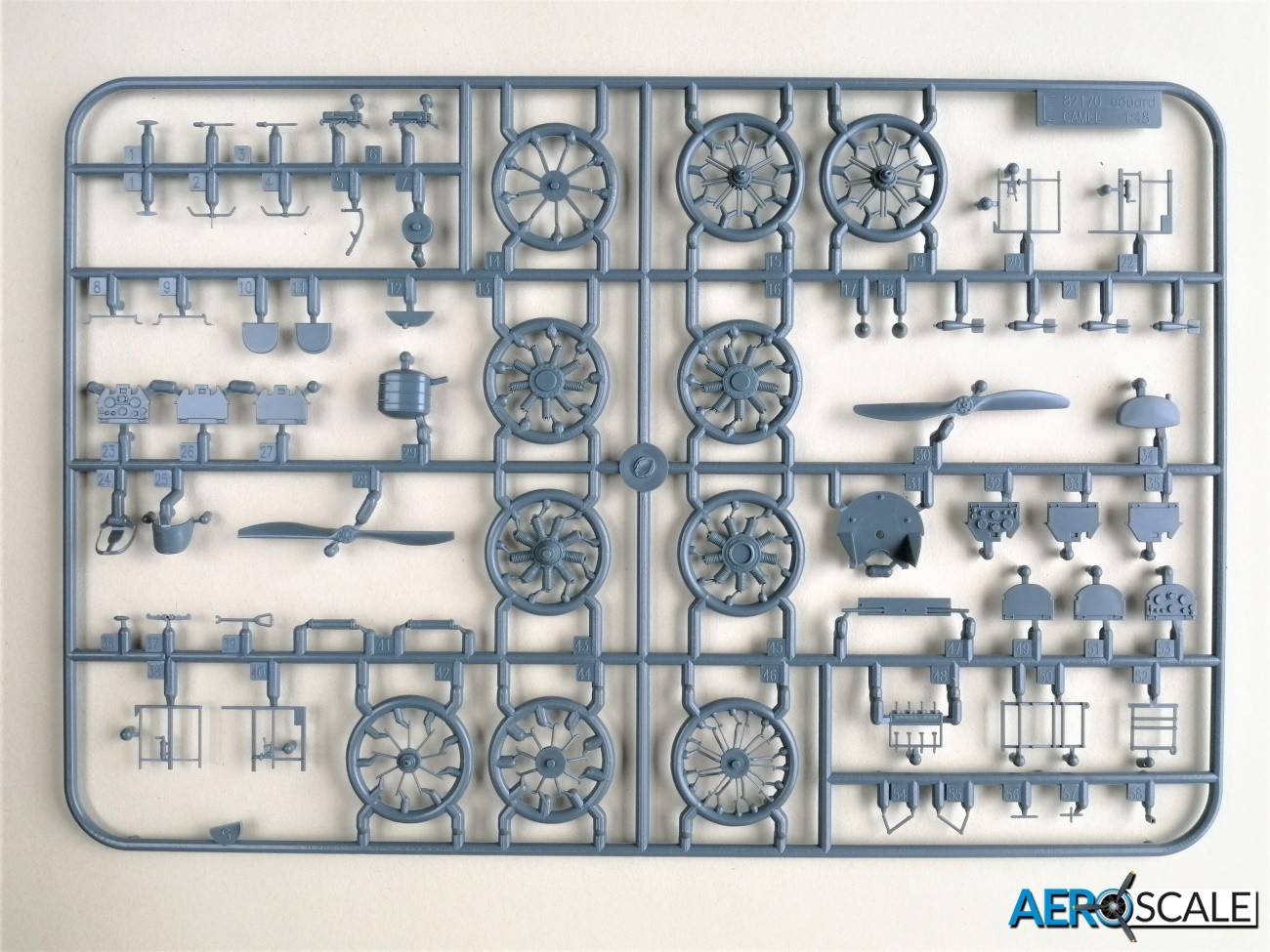
Despite its vices the Camel was pressed into the role of a night fighter, though it wasn’t popular with pilots. The Sopwith Camel F.1/3 Comic was fitted with navigation lights for night time duty. Some Comics were fitted with Lewis machine guns on Foster mountings over the wing. The Lewis gun could not be synchronised to fire through the propeller arc. It was found that the wing protected the pilots night time vision from the glare from the muzzles. One or both guns could be used pointing upwards. Incendiary munition was also used to better combat the German bombers. The cockpit was moved rearwards so the pilot could reload the guns. Around one hundred Comics were built and they were assigned to home defence squadrons in the south east of England. The Comic was successfully used to intercept and shoot down German bombers on many occasions during 1918. One particularly successful night was on 20/21 May 1918. A combined force of 74 Camels and Comics as well as Royal Aircraft Factory S.E.5s intercepted 28 Gothas and Zeppelin-Staaken R.Vis. Three German bombers were shot down, while two more were downed by ground anti-aircraft fire. A further aircraft was lost to engine failure, resulting in the heaviest losses suffered by German bombers during a single night's operation over England.


THE KIT
This is Eduard’s fourth Edition of the quarter scale Sopwith Camel that was first released as a new tool in 2021. The Sopwith Camel Comic night fighter has been released as a ProfiPACK.
Inside the top opening box, you will find:
- 3 x grey plastic sprues
- 1 x clear plastic sprue
- 1 x pre-coloured photo etch fret
- 1 x paint masks
- 1 x decal sheet.
- 1 x 16 page instruction manual


Unsurprisingly for an aircraft of this era, there are not many parts for the cockpit. You can either use the plastic seats with a slight wicker pattern moulded on it. Or you can use the rather impressive pre-coloured photo etched parts with the etched wicker pattern. The instrument panel can be created using superb looking pre-coloured PE or you can use the plastic parts with decal instrument faces. The plastic runner board acting as a floor for the cockpit has rudder pedals moulded in. There is a spade handle style control column to add. The interior of the cockpit has frame work moulded onto the side walls. There is also a separate frame to add to the sidewalls
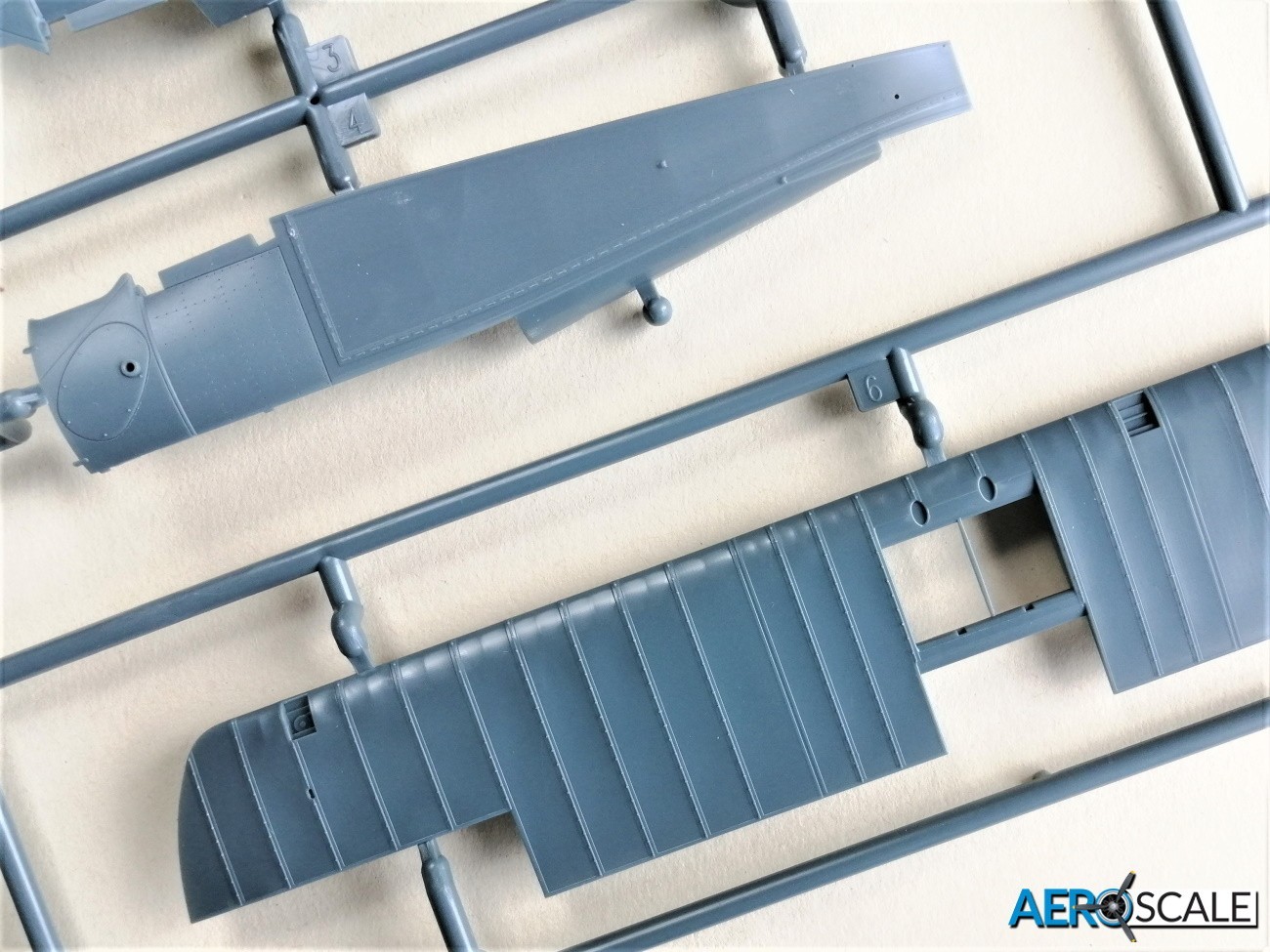
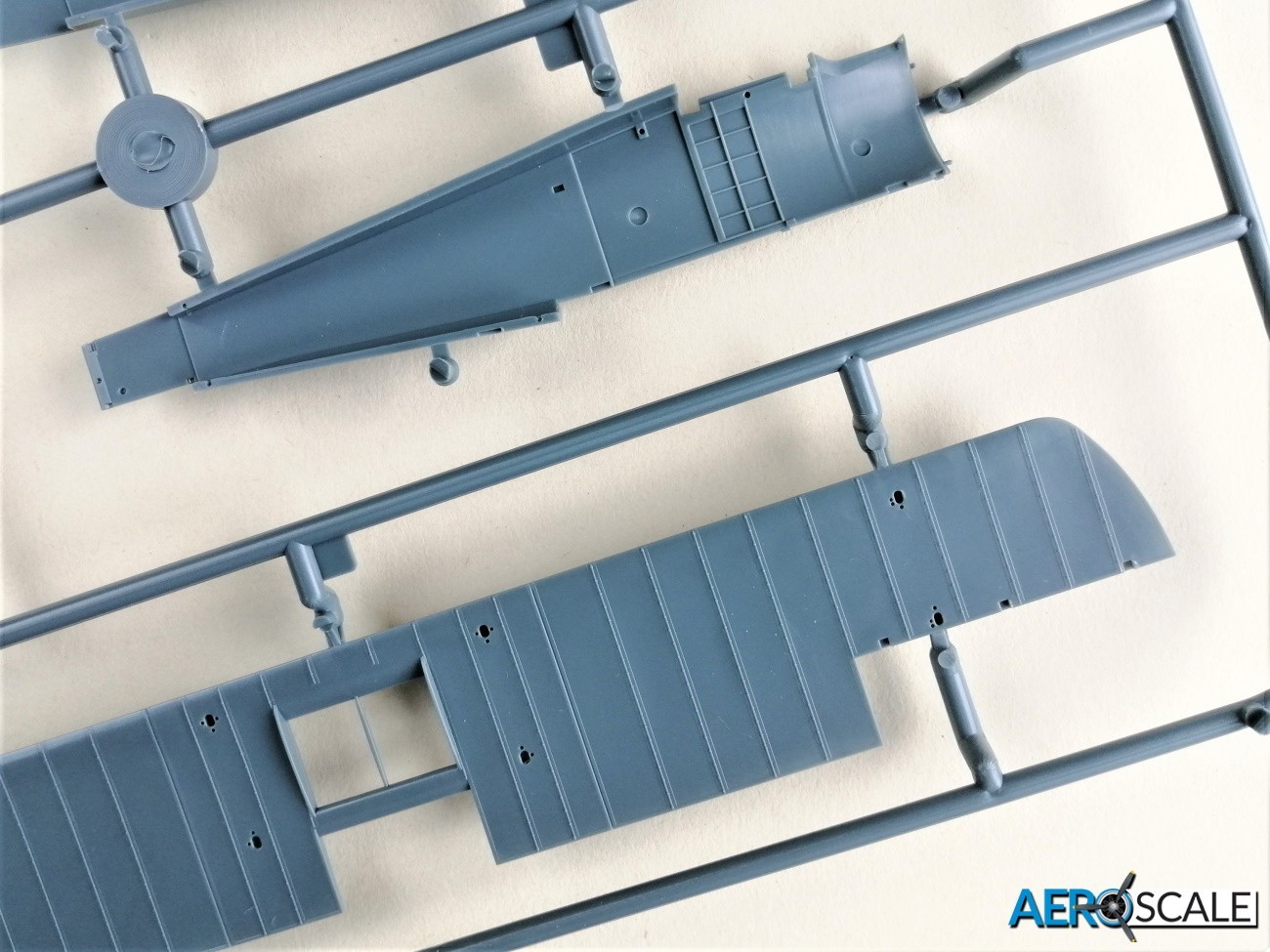
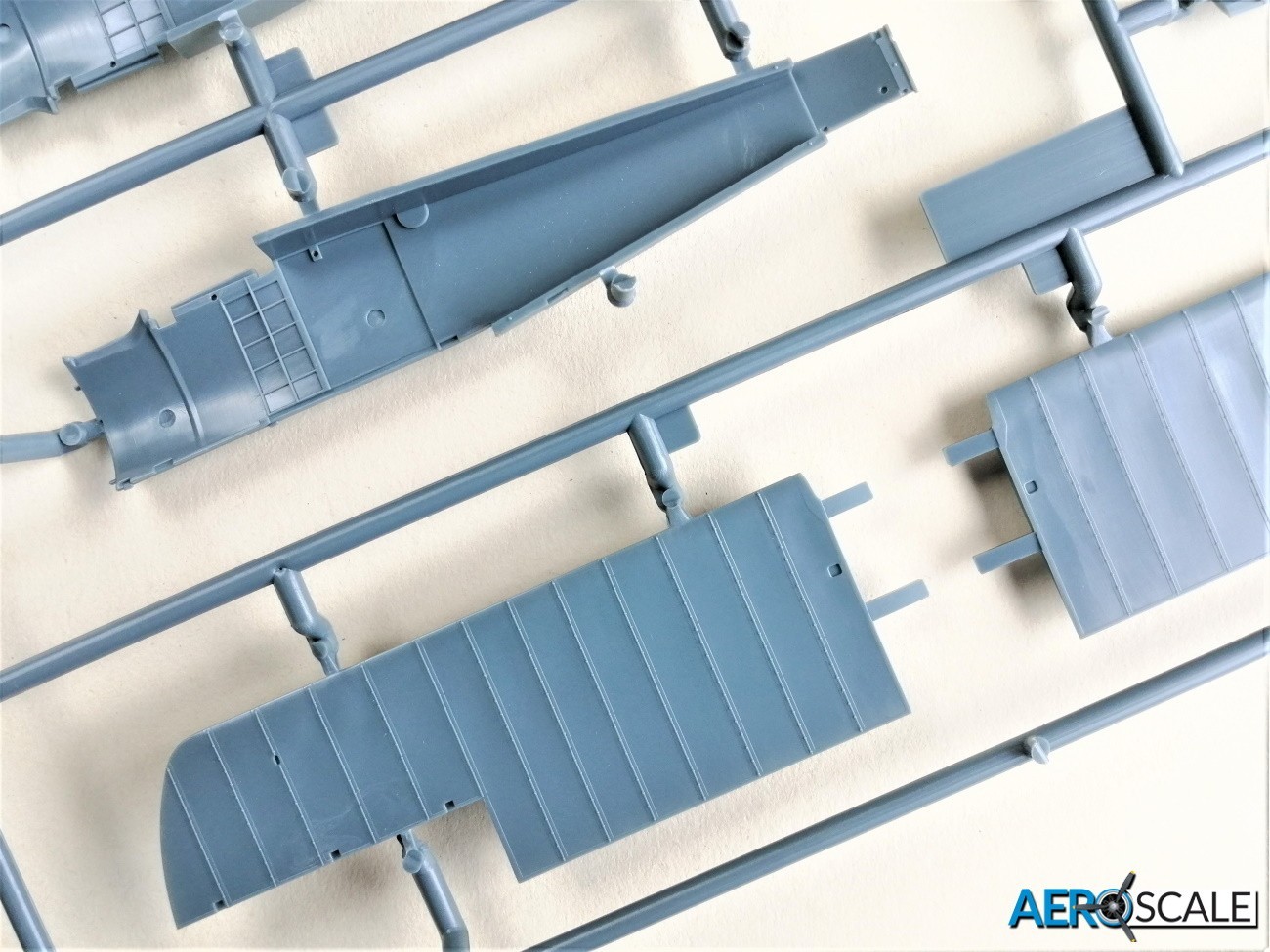
The detail representing the stretched fabric surface and the stitching is superb, some of the best I’ve seen. Also the detail, raised fasteners and recessed screws are delicately done. If you already have the previous Eduard quarter scale Camels, then you will immediately notice how much further back the cockpit is on the Comic fuselage. Eduard has made the upper deck aft of the engine a separate part to accommodate the different locations of the cockpit and armament. To this is added the clear windscreen and the PE gun sights. The raised fairing to the rear of the pilot is a separate part. Onto this was fitted a light, which is a clear part. It wasn’t fitted to all aircraft so check with your marking option. The superbly detailed vertical tail and rudder are separate parts. There are PE control horns included.


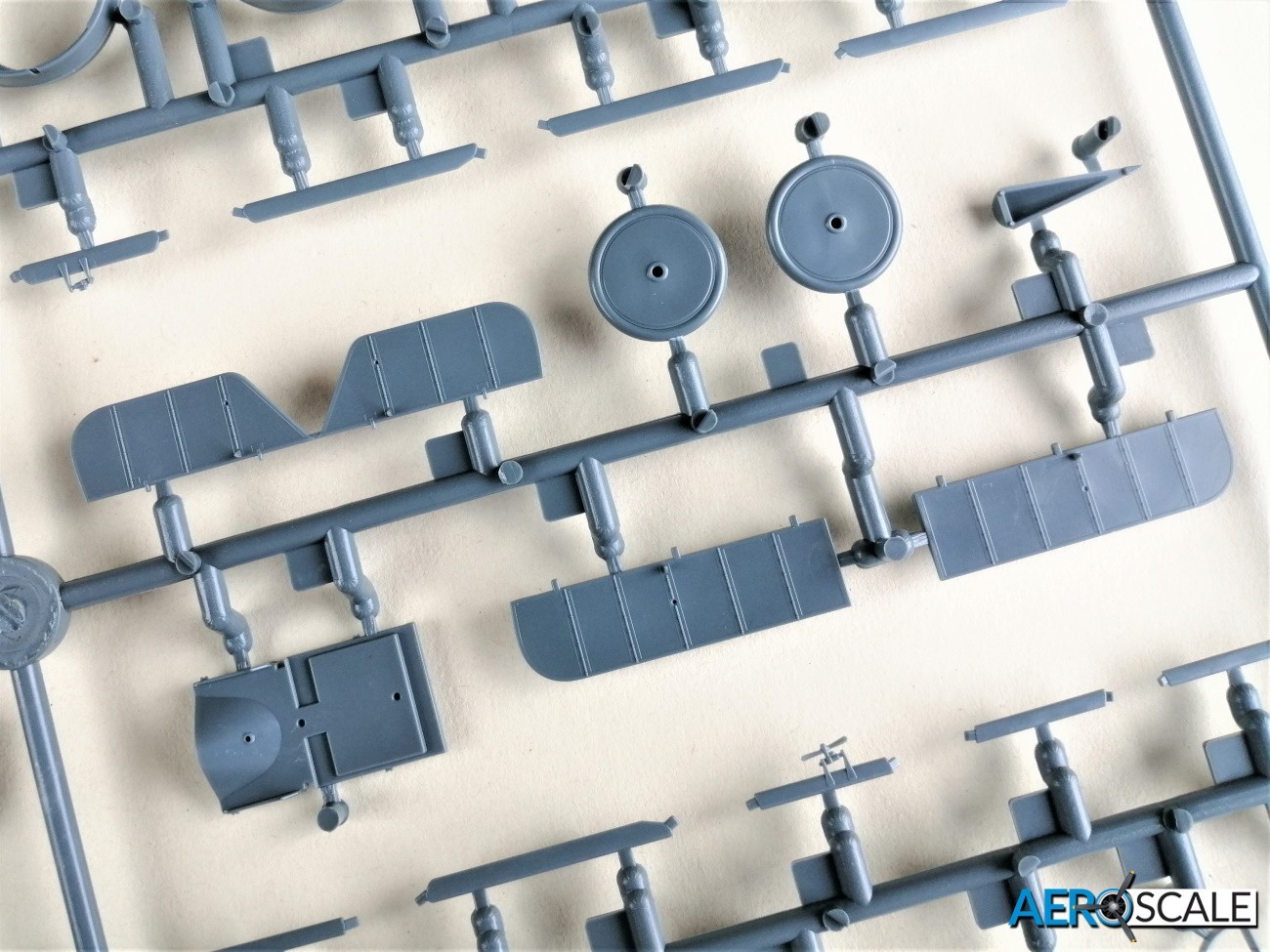
There is a choice of Clerget or la Rhône rotary engines to install. The Clerget is made up from three parts while la Rhône is made up from two. Detail for both is superb despite the lack of PE parts. The cowl over the engine is one piece.
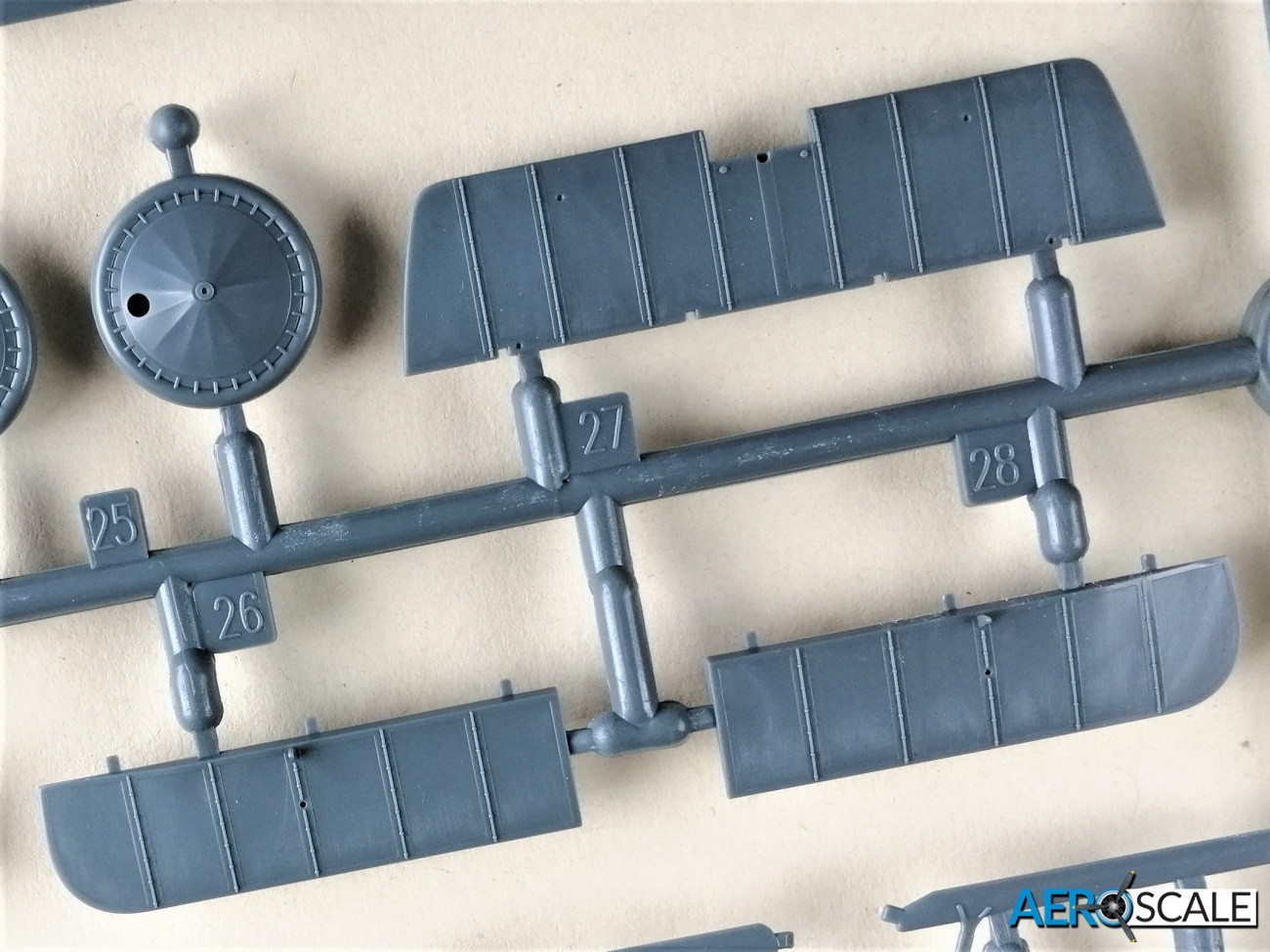

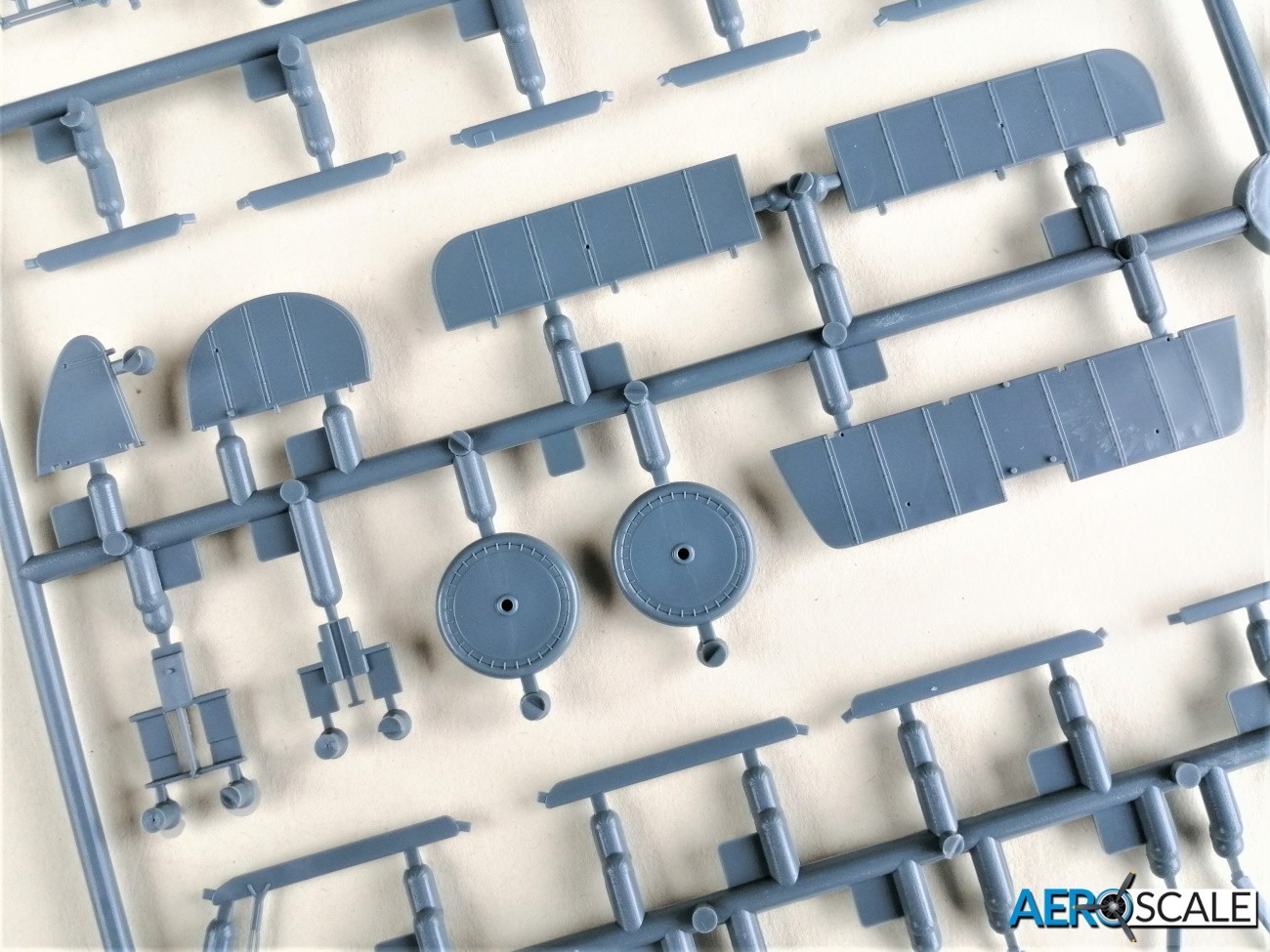
The upper wing is one piece and the lower wings are split in two. The lower wings have generous tabs that fit into the fuselage to create a strong bond. The ailerons in the upper wing are separate. Considering each wing is one piece, there is not a hint of ejector marks. The detail is superb and Eduard has replicated the look of the wing perfectly. The rib tape is perhaps a tad too prominent, though I’m sure the paint will tone them down somewhat. The ribs under the fabric at the leading edge is also worth noting. Detail even extends to the pulleys and cables tensioning the upper and lower wings. These will be seen through the clear plastic parts representing inspection ports. There are a number of clear parts to add representing the lights for this nocturnal fighter. The interplane and cabane struts don’t miss out on the detailing. The twin tubed pitot tube looks particularly good. The superbly detailed tail horizontal surfaces are both one piece. The elevators are moulded as one. There are PE control horns included for all the control surfaces.

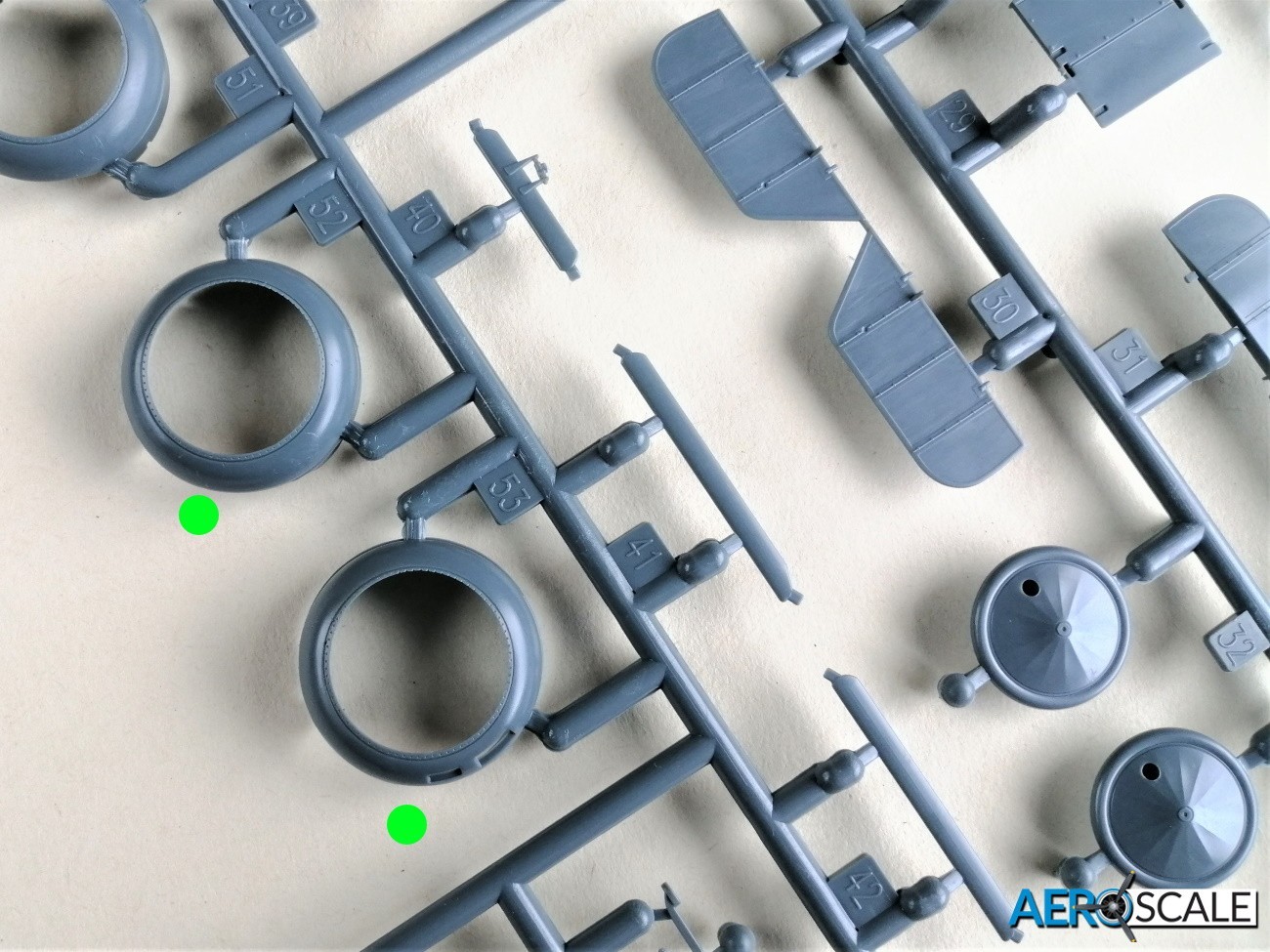
There are two styles of undercarriage depending on which marking option you go for. There is a lovely representation of the anemometer style air speed indicator on one of the undercarriage struts. There is a PE replacement for the tiny propeller. The depiction of canvas stretched over the spokes of the wheels is nicely done.
The kit includes a couple of Lewis machine guns attached to their mounts and there is an additional mount with a separate gun. This allows you to depict either both guns firing forward. Alternatively you can display the left gun firing forward and the right gun positioned to fire obliquely upwards. The magazines for the Lewis guns are separate and they have PE handles to attach to them.


PE parts include seat, instrument panel, seat belts, tail skid detail, gun sight, control cable horns, and cabane gun support.
There are paint masks for the tyres, wing inspection ports and windscreen
Eduard has produced the decals and there are quite a few. They are glossy with excellent colour strength and the register is very good. There are no stripes for option ‘A’ included so some masking is in order. The roundels vary slightly so make sure you check the colour profiles before applying. Some will require overpainting to kill the stark white colour. The wing roundels for option ‘E’ has no white as NIVO was painted over it. Also, NIVO was applied less than carefully on the outer edges of the blue are a little uneven.
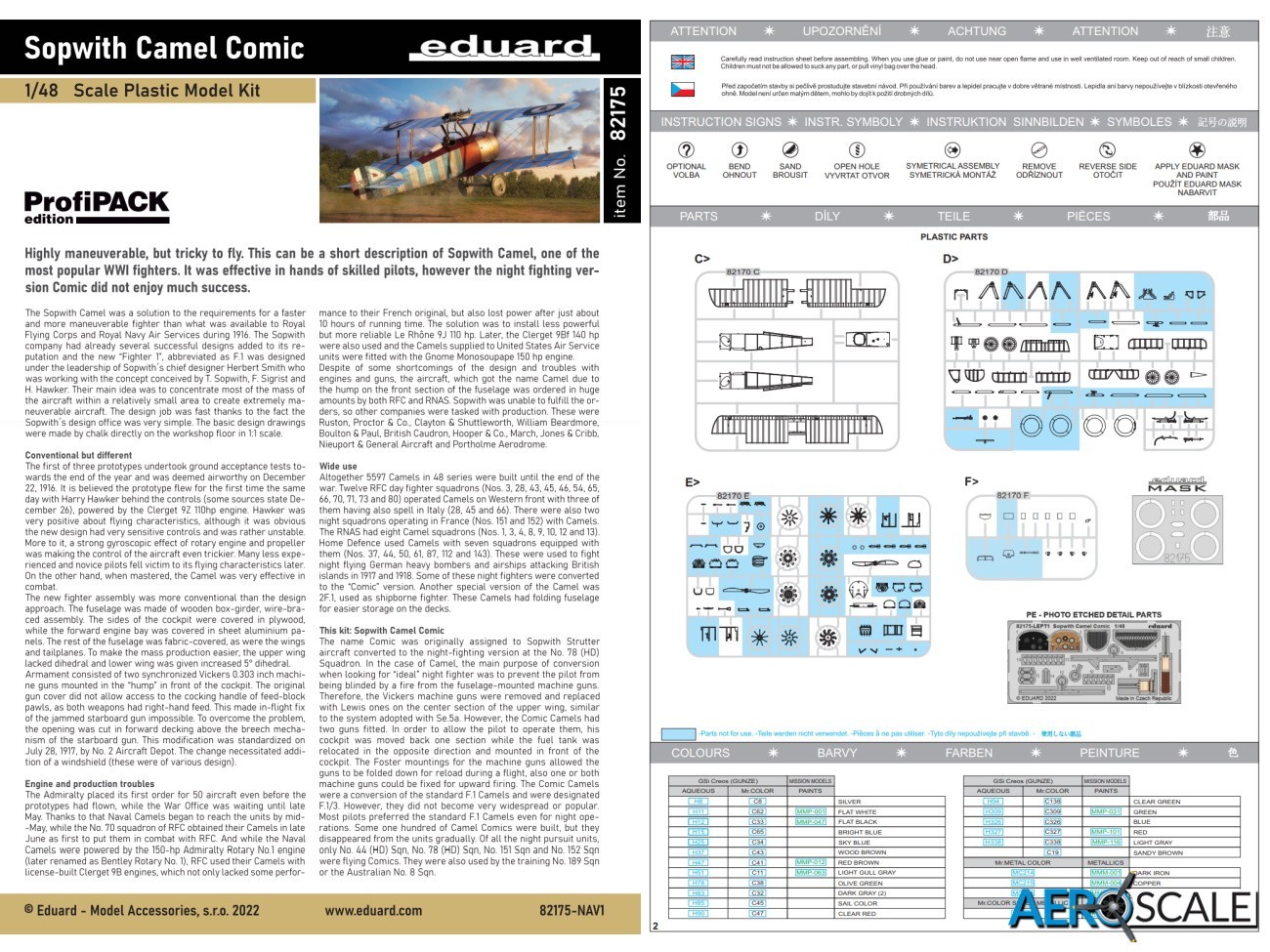

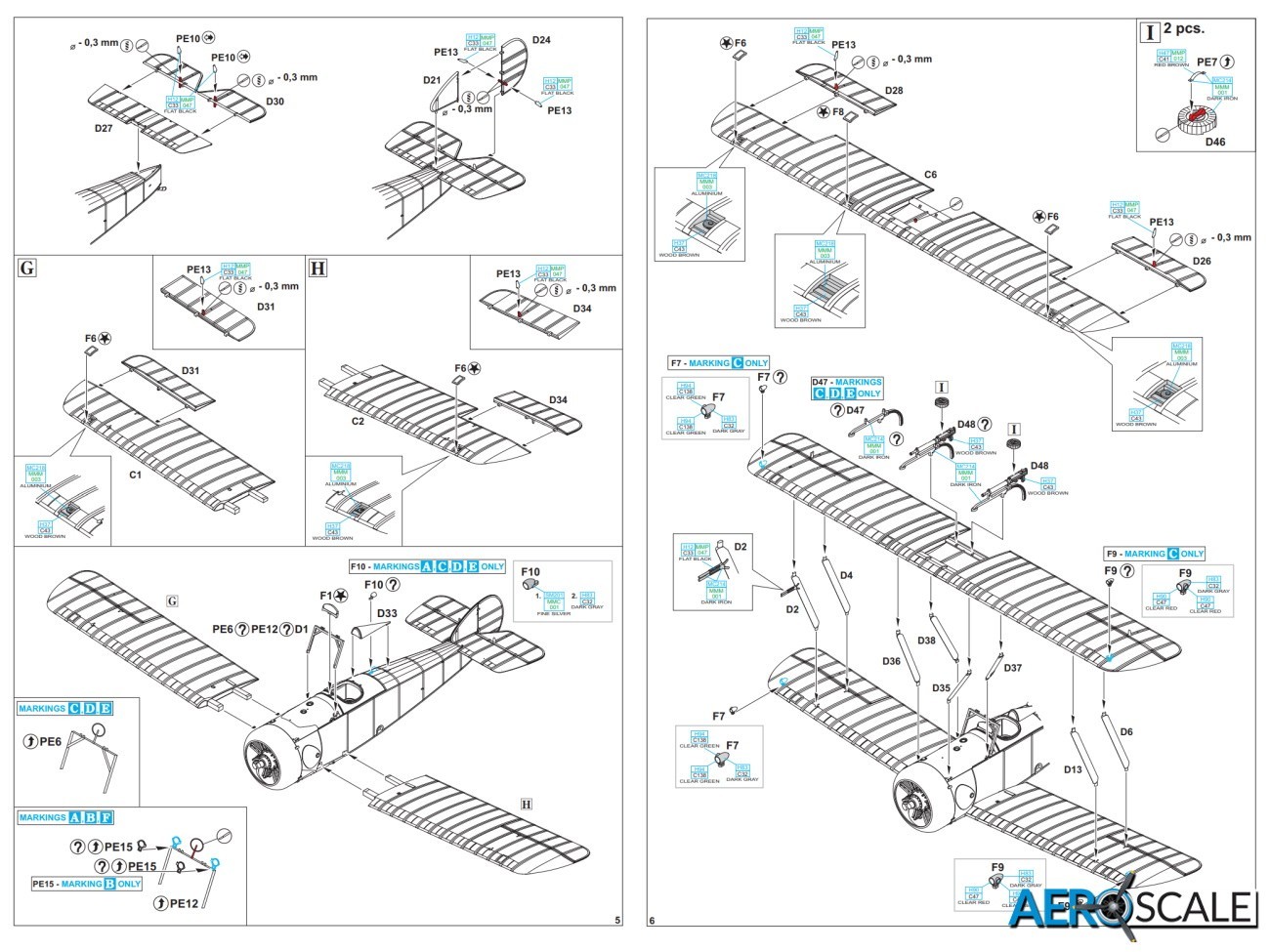
There are some interesting marking options including:
- B9287, No. 78 (HD) Squadron, Sutton´s Farm, United Kingdom, spring 1918
- B2402 No. 44 (HD) Squadron, B flight, Hainault Farm, United Kingdom, January 1918
- No. 44 (HD) Squadron, C flight, Hainault Farm, United Kingdom, October 1918
- E5165 No. 8 (Training) Squadron AFC, Leighterton, United Kingdom, September 1918
- E5165, Lt. L. C. Sheffield, No. 151 Squadron RAF, Vignacourt, France, September 1918
- B4614, No. 44 (HD) Squadron, B flight, Hainault Farm, United Kingdom, February 1918
Option ‘A’ is quite striking with its pale blue and white stripes and red around the cockpit. Though Eduard doews point out the red could be black. Just as interesting if less spectacular is option ‘E’ painted overall in an experimental shade of dark green/grey known as Night Invisible Varnish Oxfordness [NIVO]. It was one of two F.1/3 painted this way. Option ‘C’ is painted olive drab overall with a none standard roundel on the tail. Across all the options there are vary attempts at blacking out or reducing the white of the roundels. The blacking out is not reproduced on the decals, so you will have to do that yourself. The black out is not confined to the roundels, it looks as if option ‘B’ has had the silver colour of the nose overpainted with olive drab blotches.
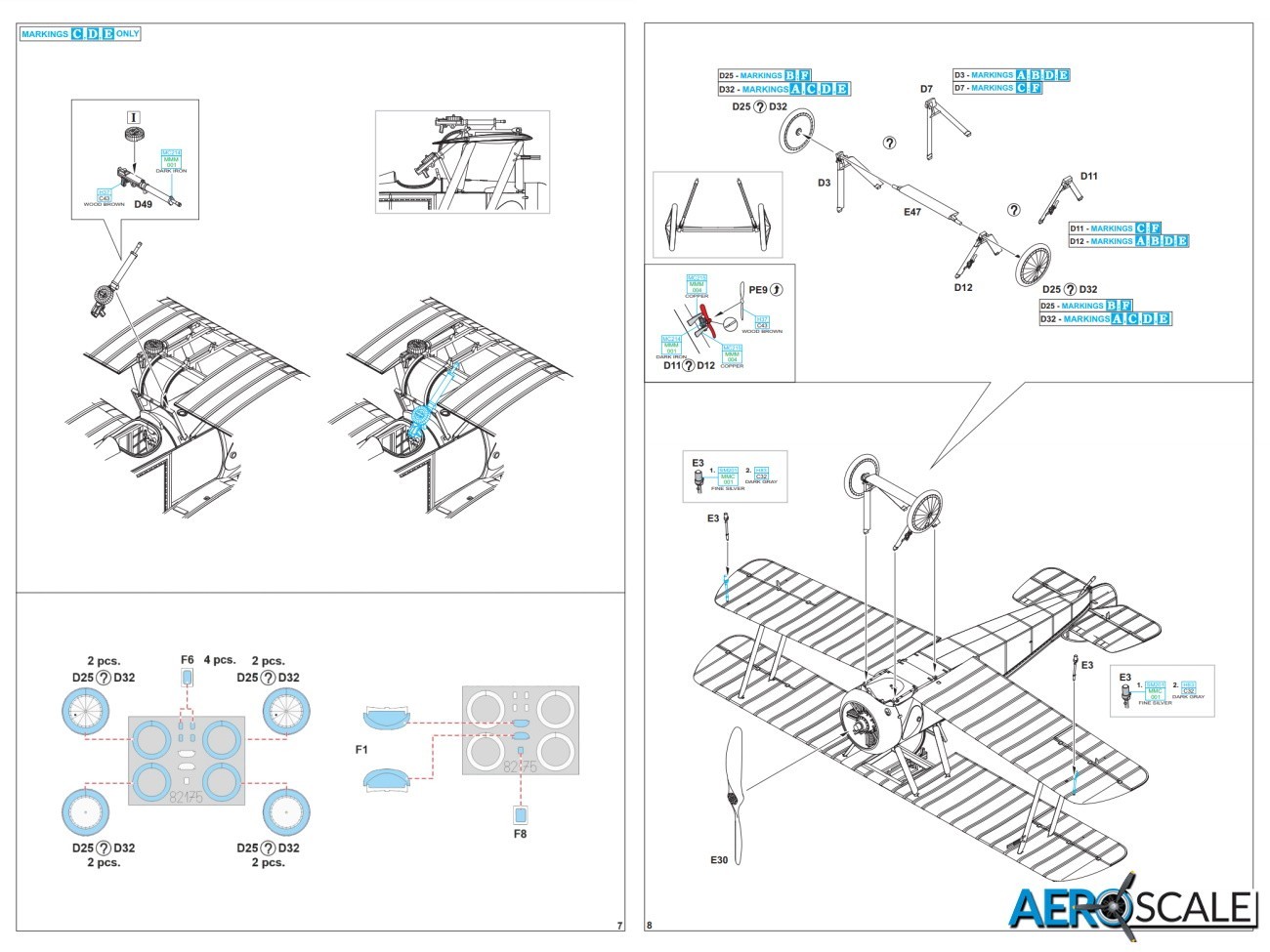

Instructions are in the form of a A4 format 16-page booklet. A couple of pages are devoted to the rigging of the aircraft. The painting guide has upper and lower plan and side view of each marking option. Gunze Sangyo and Mission paints are used for reference, but it is simple enough nowadays to cross reference these with your favoured paints.
CONCLUSION
I know the folk at Eduard are pretty fanatical about aviation subjects, but they do seem to pull out all the stops for WWI aircraft. The Sopwith Camel Comic F.1/3 is a superb looking release. Very impressed with the plastic detail and the pre-coloured PE parts are just the icing on the cake. The relocated cockpit position of the Sopwith Camel Comic F.1/3 will make an interesting comparison with the Camel F.1. Nicely done Eduard
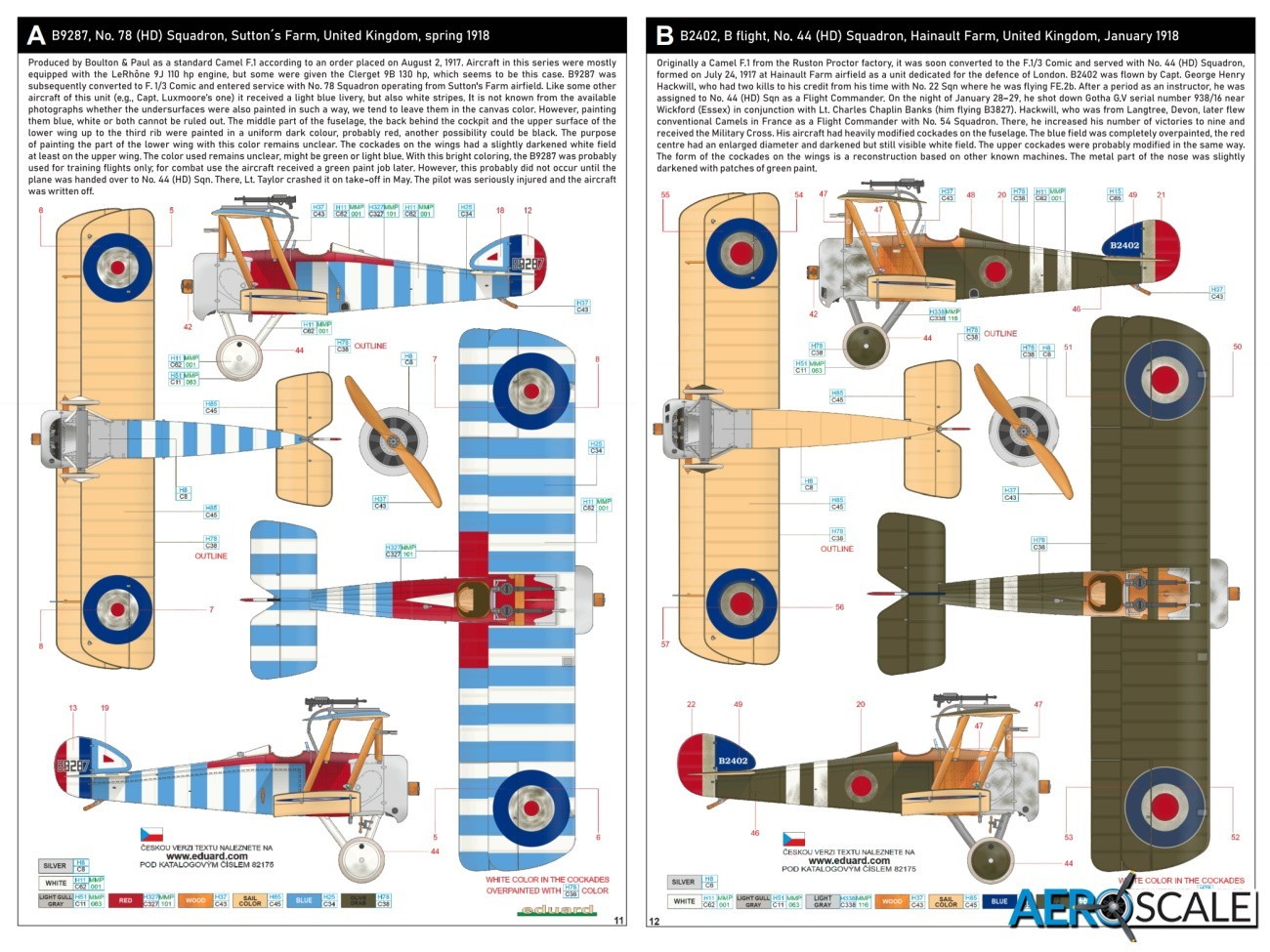

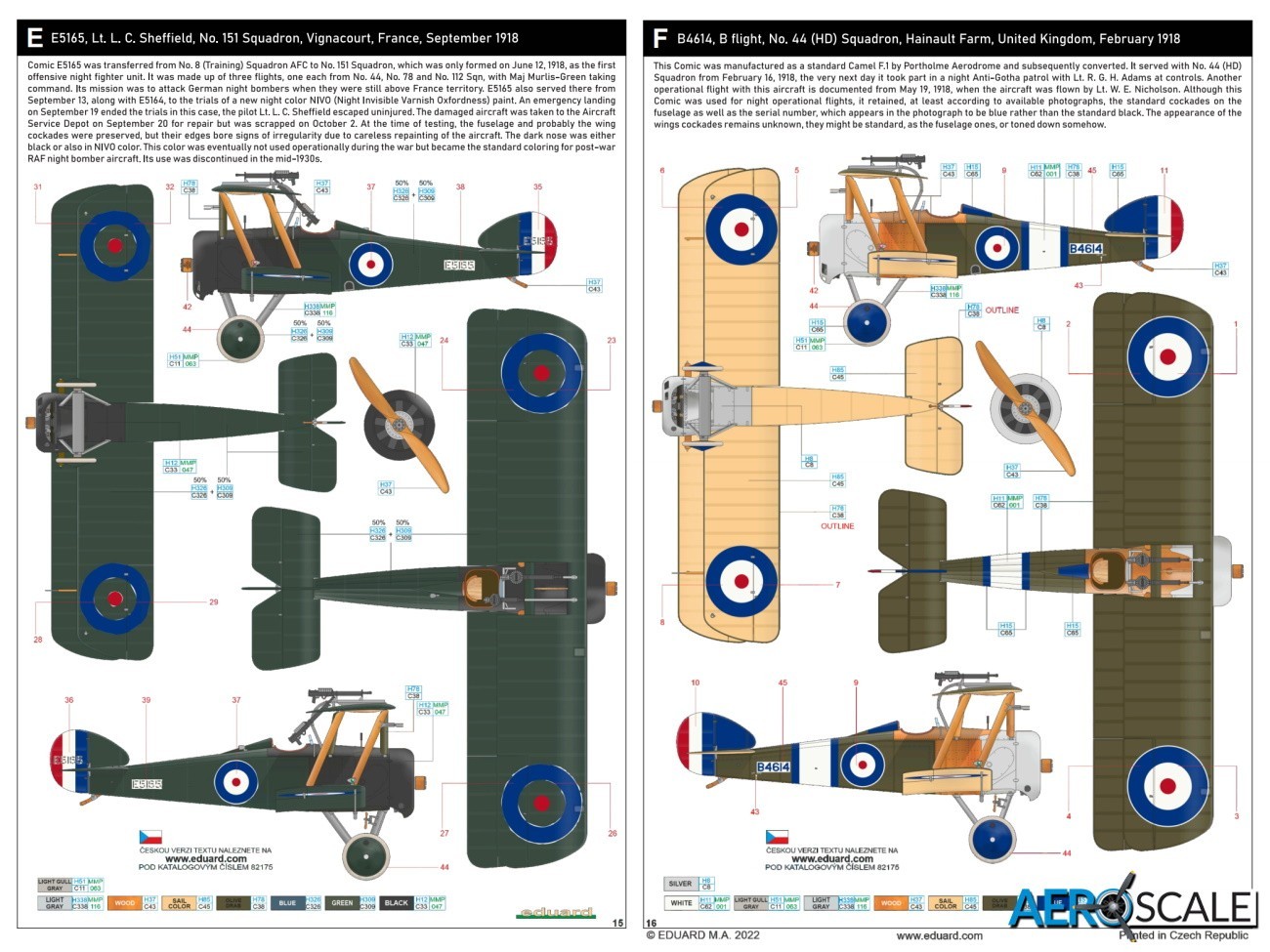
Price from Eduard: 475,21 Kč [£ 16.61]
Our thanks to Eduard for the review sample
82175 - Sopwith F.1/3 Camel Comic – 1:48
Please remember, when contacting retailers or manufacturers, to mention that you saw their products highlighted here – on AEROSCALE.











